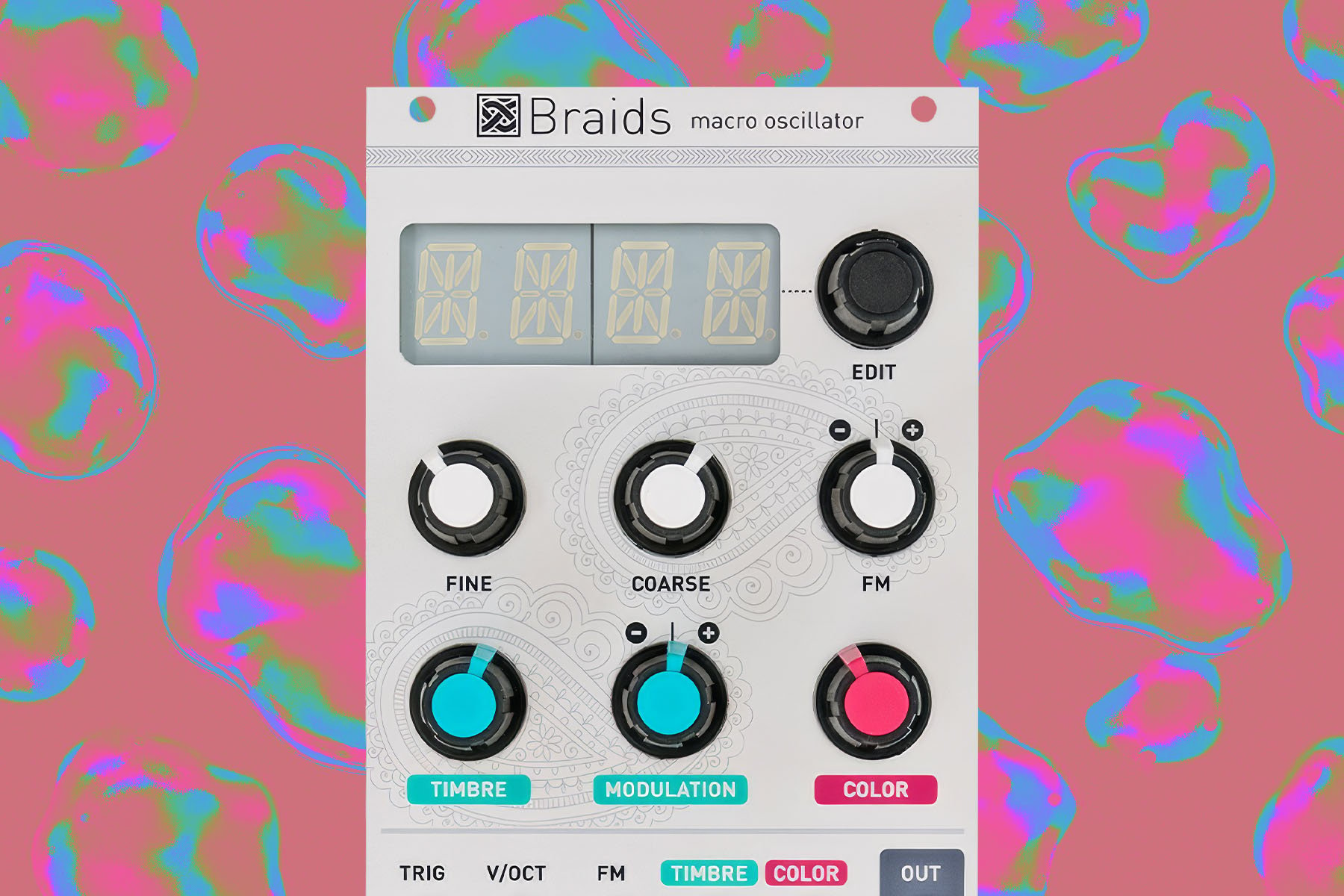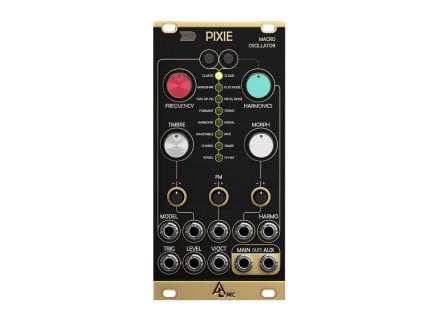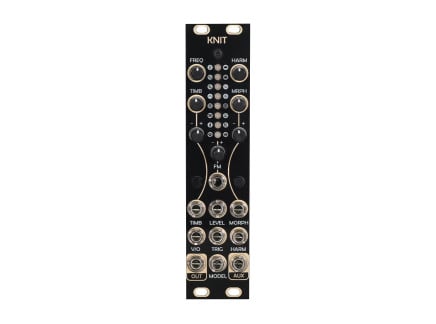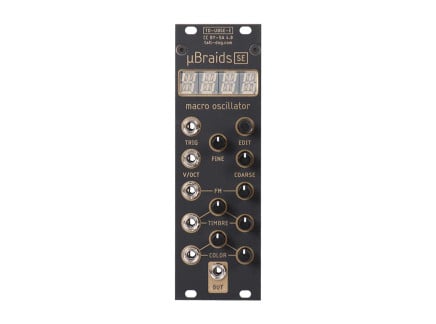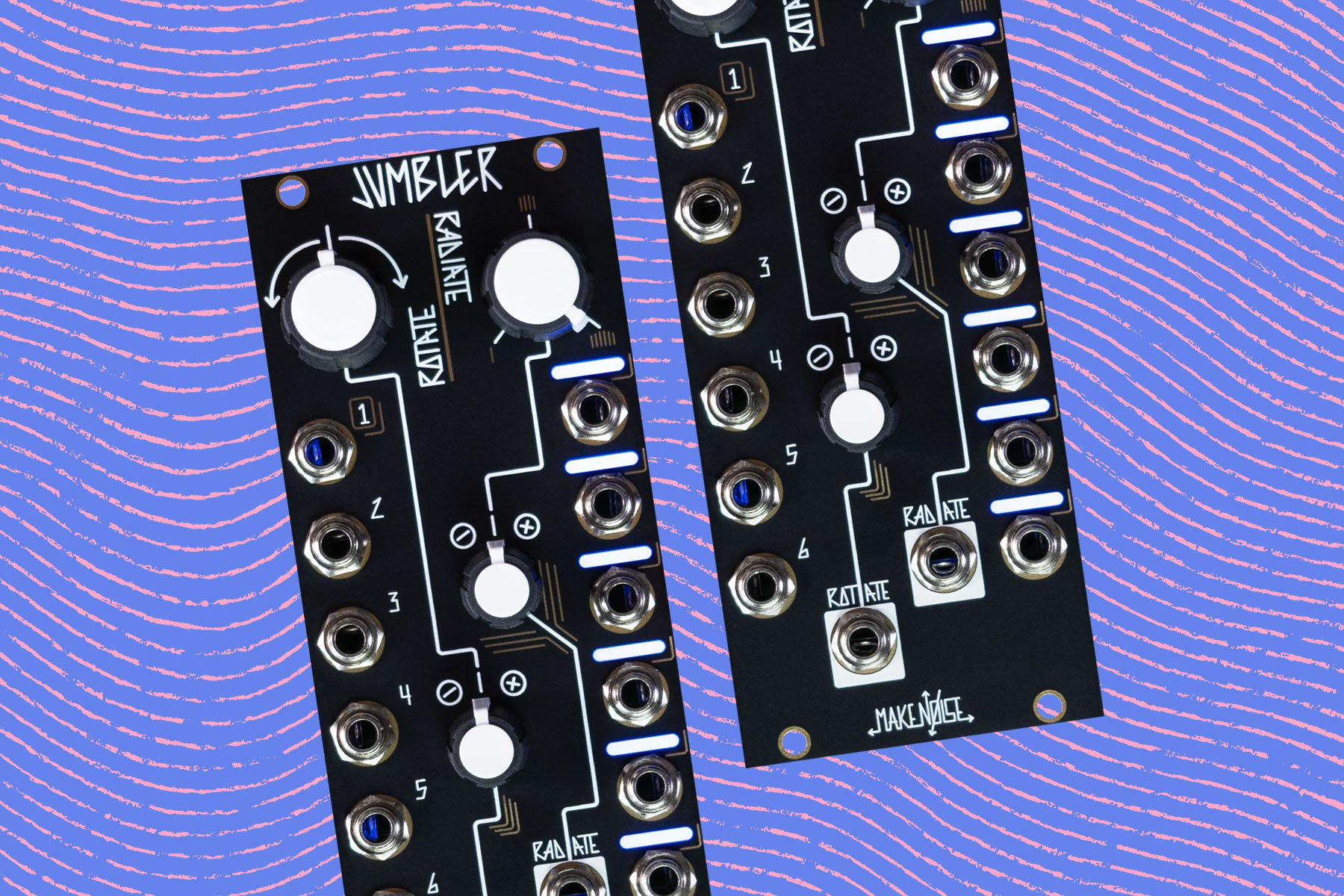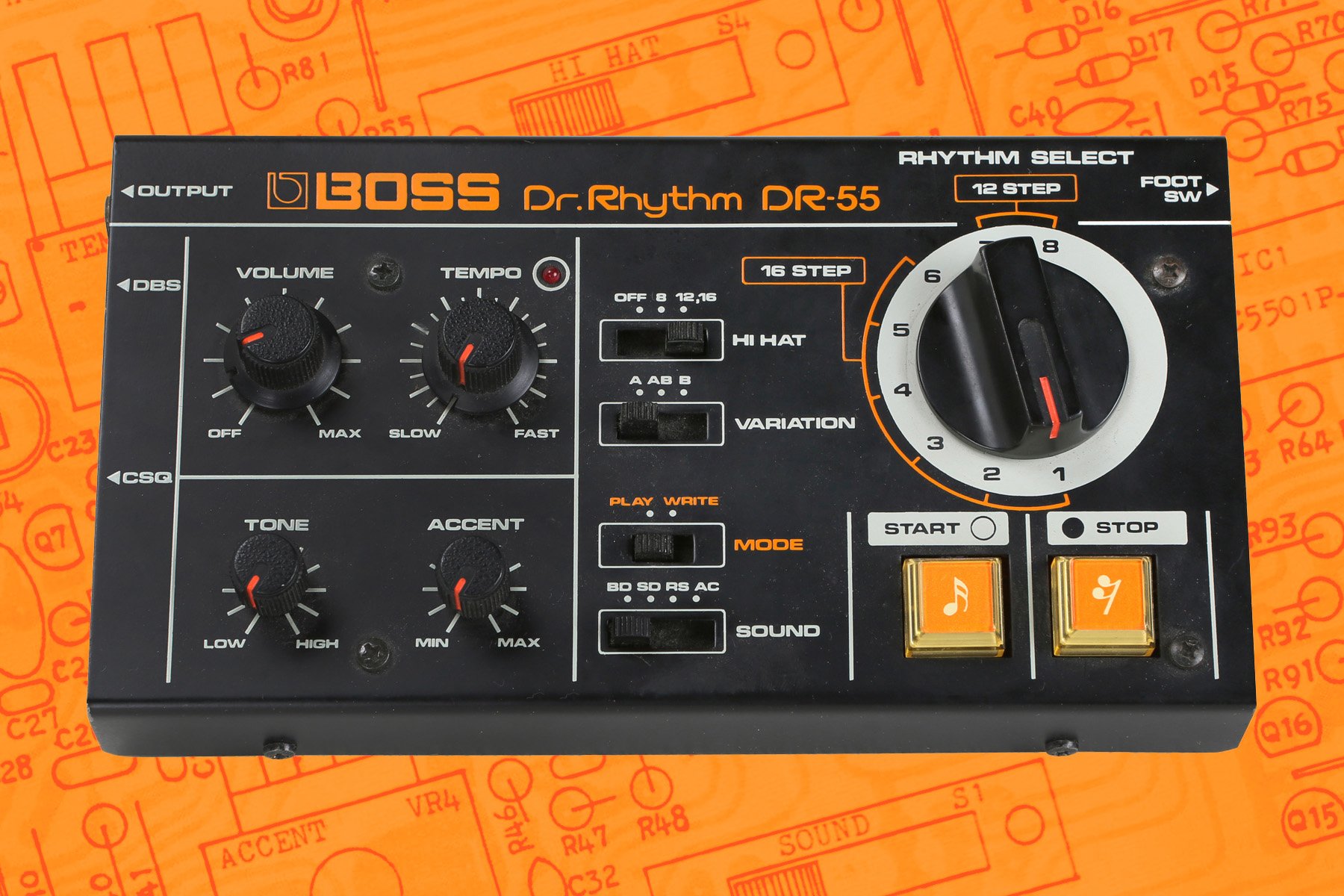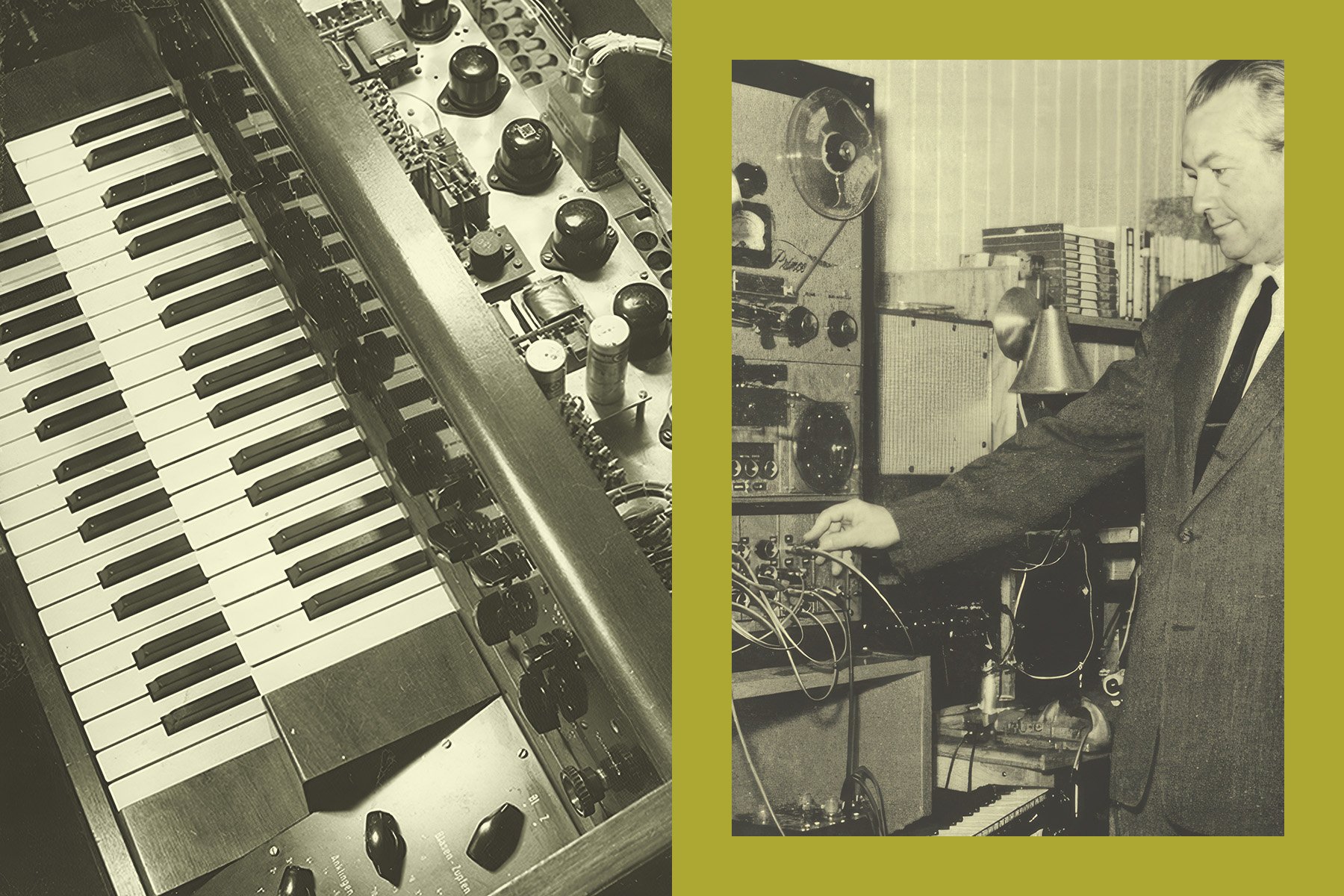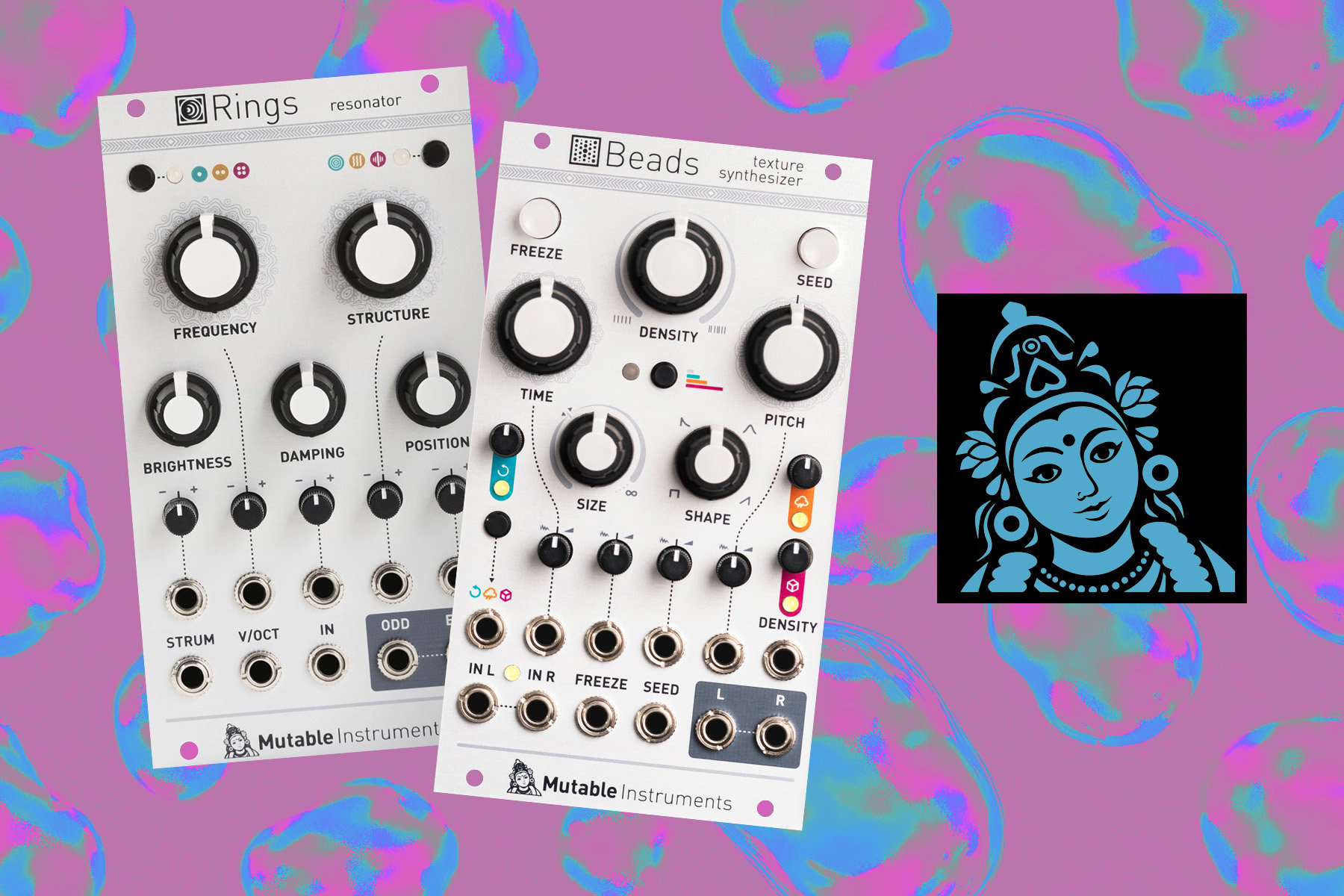2013 was a long time ago—12 whole years, in fact. Today, lazily browsing new oscillators on ModularGrid while half-watching a show is as habitual as checking music tech blogs for announcements and releases. We live in an age of bounty, and the fecund sonic soil of small-scale, wildly creative modular production was just beginning to bear fruit back in the early 2010s.
I didn’t pick 2013 out of thin air; that was the year the game-changing Mutable Instruments Braids was introduced to the market. It made waves—lots of them—both in the literal sense and within the synth community at large. There were plenty of notable hardware releases that year (DSI Prophet 12, Moog Sub Phatty), but 2013 was the year that audiophiles really started looking to the world of modular for the most exciting ideas in synthesis. Don’t take my word for it; Sound on Sound released this article in, you guessed it, 2013.
Up to this point, Eurorack's most exotic territory were Buchla-minded releases from Doepfer. Beyond that, enterprising experimentalists were a bit out in the cold in the late Aughts and early Teens of the 21st century. Then, in a steady trickle, more independent producers composed of small teams of hungry minds started releasing progressively more involved and imaginative modules. Around this time, Intellijel popped up on shelves with sleek design and huge sound á la the Korgasmatron. Scott Jaeger, aka The Harvestman, was iterating on his cult favorite wavetable-centric Piston Honda oscillator with sonically furious results. The still up-and-coming Make Noise was proselytizing the magic of function generators with the mysterious-yet-alluring Maths.
Likewise, Braids was a consequential introduction that shaped both what users wanted in a module and what builders realized could be put in a module. Mutable Instruments founder Émilie Gillet is a celebrated figure even after the shuttering of her company; the ingenuity of her designs and an open-source ethos allowing third-party production ensured that she would have fans even after the doors closed. Braids is a capstone example of the mega-functionality that came to be part and parcel with modern Eurorack, but it’s also an interesting case study: there’s a clear through-line in the development of Gillet’s very first creations all the way to the revolutionary Plaits, and that line runs straight through the development and proliferation of Braids.
Build-Up to Braids
The journey to the Braids began in 2009, when Émilie was still working on signal processing and machine learning for the likes of Google and Last.fm. She had been playing electronic music for a decade and owned a number of hardware synths, but found her interest waning in familiar avenues of writing and creating. She settled on creating a MIDI synth of her own design to provide a new way to approach the construction of analog and digital components as well as a new approach to creating music. She quickly found that the former reason overshadowed the latter, and in her own words, “...making synths sucked [up] all my time!”
Her first creations were on Arduino boards, a nifty, programmable microcontroller that offers a great pathway into programming. It’s kind of a like a simplified Raspberry Pi: whereas the Raspberry is a single-board computer (SBC) with a microprocessor and plenty of connectivity, Arduino consists of a microcontroller board with an Integrated Development Environment (IDE), or just software for programming the Arduino board. Arduino is used everywhere from heartbeat monitors to traffic control systems, and it just so happens to also make a great platform for building a synth.
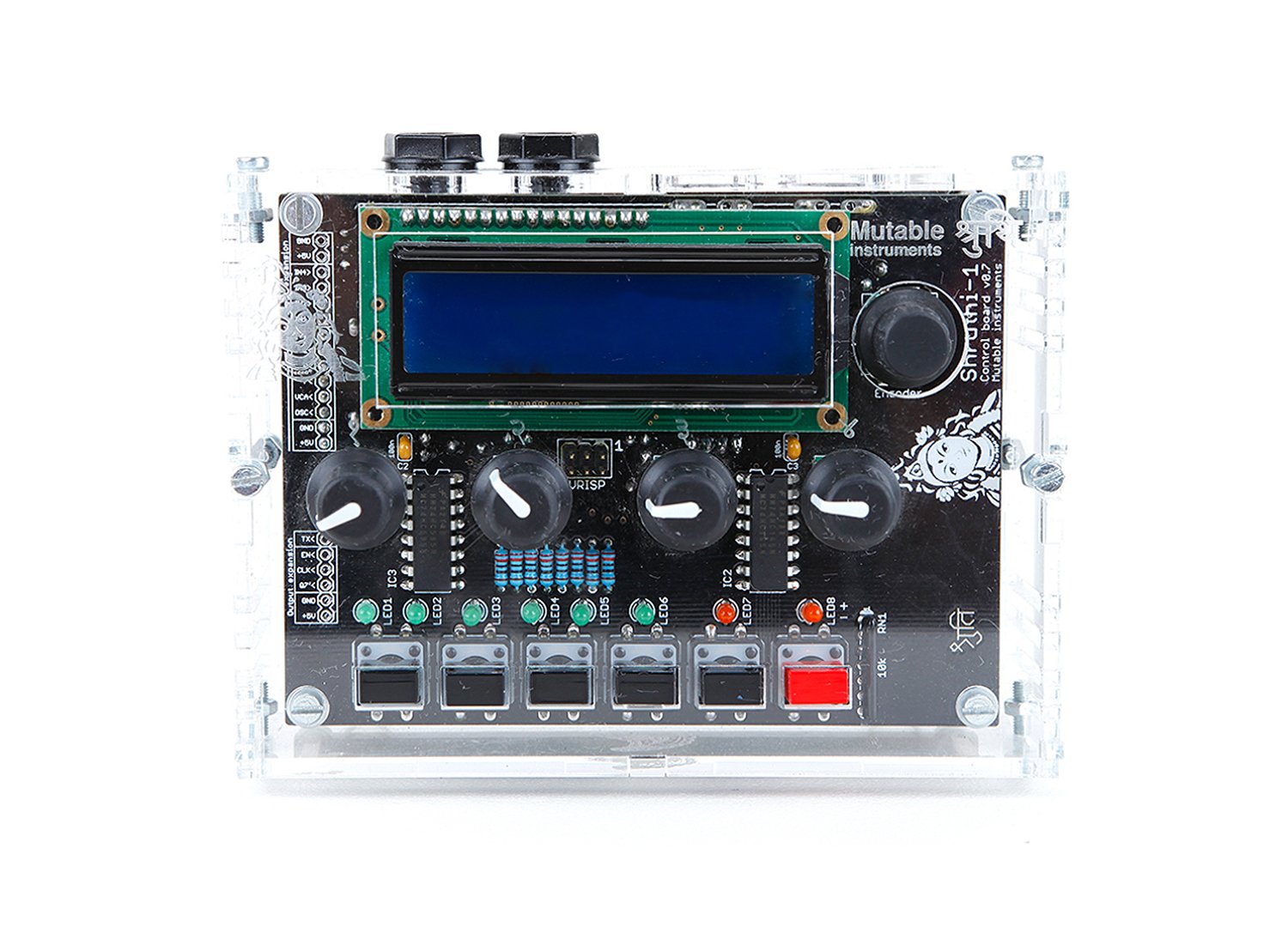
After some tinkering, trial, and error, Gillet came out the other side with the Shruthi-1 in tow. Originally conceived just as a personal instrument, the Shruthi-1 was a solder kit that resulted in a clear plastic brick with a screen that looked more suited to turning on jets in a pool than producing beautiful synth sounds. However, the results spoke for themselves.
Combining one digital board and one analog, the Shruthi immediately won over enthusiasts in the know with its impressive feature set and low price tag. The digital half of this mega-brain featured two oscillators, a sub-oscillator, transient and noise generators, LFOs, envelopes, and 16-step sequencer and arpeggiator. That is wild amount of functionality—and that’s not even the whole wave-packed enchilada. The digital board was sent to a digital mixer and then on to the analog board, which housed an analog mixer, filter, and VCA. It’s not all that uncommon nowadays to see modules and whole rigs built on this digital-analog playbook, and the Shruthi was a big step towards that reality.
Namely, the assortment of available waveforms and modes was a clear starting point for what would become Braids. In addition to your standard square, sawtooth, pulse and the like, the Shruthi had eight wavetables under the hood and the ability to achieve phase distortion, two-operator FM, and basic formant synthesis modes. There’s a certain stack of saw waves that we’ll come back to when we get further into detail, but there are a few more Mutable Instruments predecessors to mention.
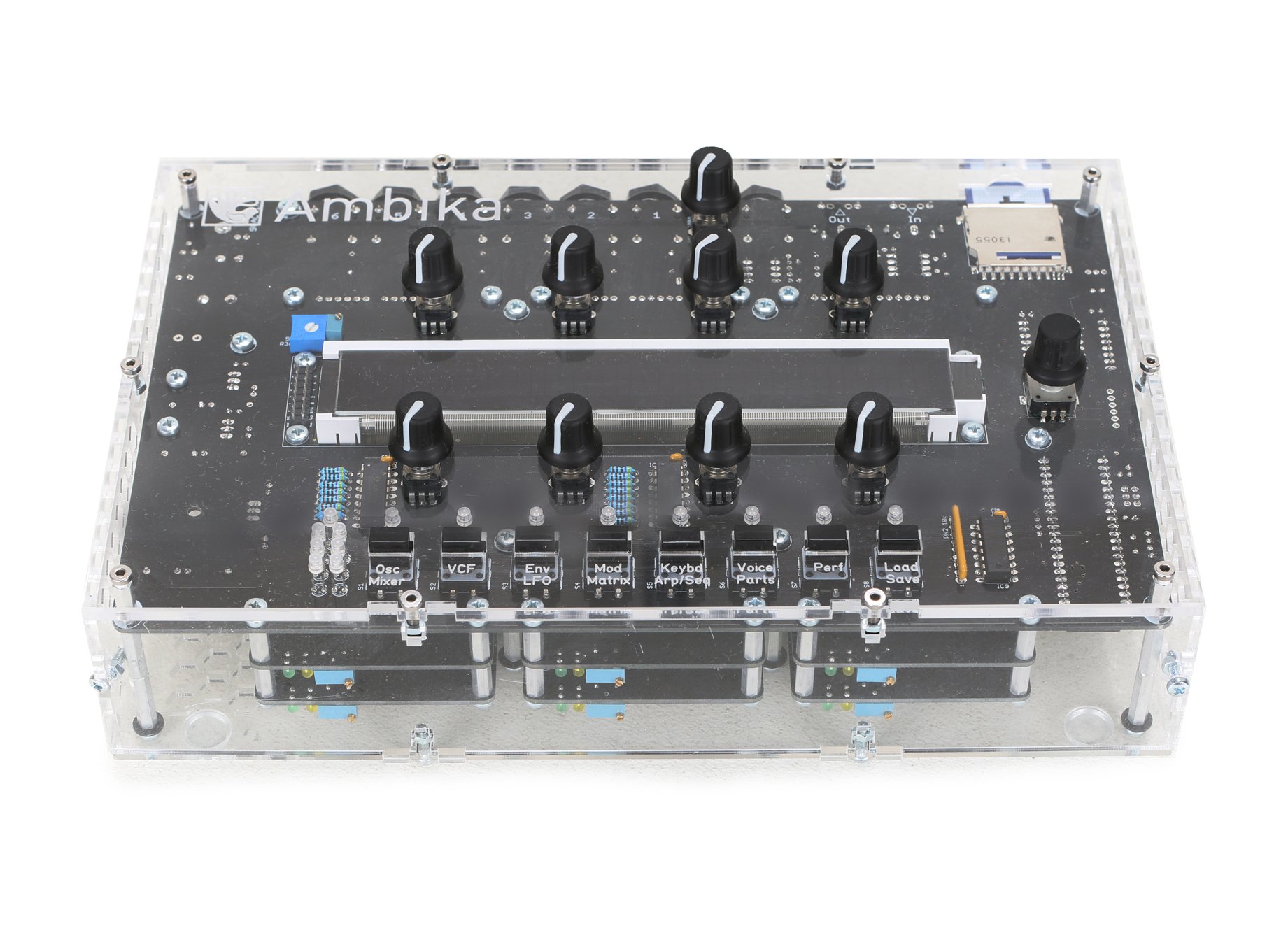
After finding her stride, Gillet created Ambika, a polyphonic rendition of the monophonic Shruthi that largely kept the existing architecture in place. Also a hybrid synth that combined digital sound sources and modulation with an analog signal path, the Ambika came in a larger chassis with a larger screen reminiscent of Eventide's Factor series pedals. It offered six voices of polyphony, which could also operate as six individual monosynths. The added processing heft gave the Ambika opportunity for some upgrades, like double the amount of onboard wavetables and intuitive voice allocation that came to define this synth. Additionally, the Ambika added more depth to its feature set with more connectivity options and even an SD card slot for sound swapping.
After familiarizing herself with DIY synth construction and taking a deeper interest in modular, Gillet set her sights on the Anushri, an analog monophonic desktop unit with a modular patchbay. The first Anushris kept their predecessors’ aesthetic with a clear amber casing, but the Anushri eventually received a brushed aluminum faceplate, which would become a hallmark of the Mutable Instruments aesthetic. The Anushri was also essential connective tissue between the flexible designs that Gillet was building a name on and a modular package that could translate that hybrid-functionality magic into the rack.
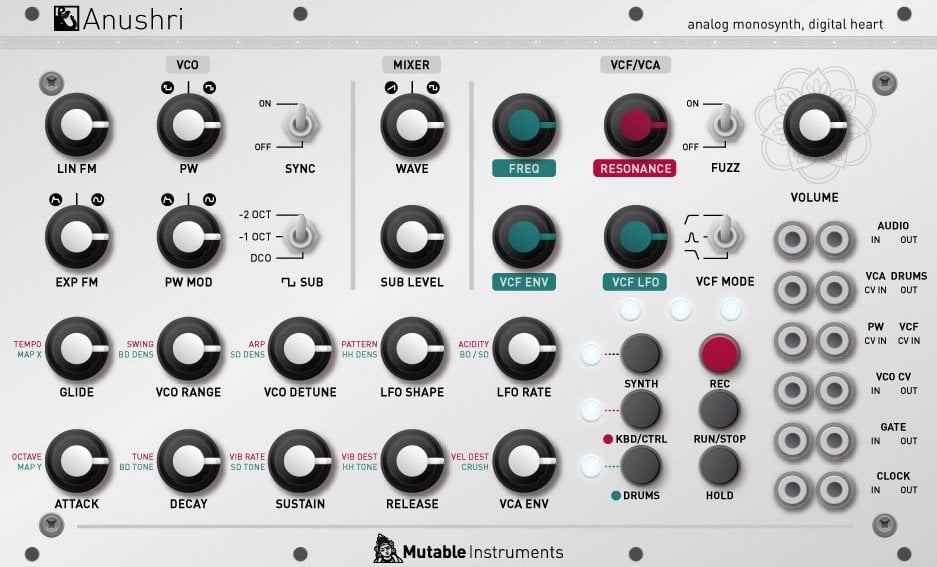
In addition to an analog oscillator, Anushri offered a digital square wave oscillator and lo-fi digital drum synth with a built-in sequencer. With all these options on deck, it felt odd that Gillet chose to do away with screens entirely and make Anushri a knob-centric experience. In the broader context of Mutable Instruments’ development and design philosophy, it absolutely squares when you look at breezy screenless capstones like Plaits. However, we have one big point of discussion involving a very crucial screen and a very crucial move into modular.
Enter the Braids.
The Macro Oscillator Arrives
Originally, Gillet turned her attention to modular not to revolutionize the medium, but because she needed some utilities for testing her creations. “I bought a 6U Doepfer system, primarily because I needed LFOs, clocks, raw waveforms [sic] etc to test the circuits I was designing…[b]ut I instantly got hooked and decided to make modules in this format,” she said in an interview with Clockface Modular.
The year was 2012, and Émilie had hit her stride creating her DIY kits with a cult following. She had designed a flagship product, a polysynth similar to the Ambika, and found herself at a crossroads realizing this would be her first industrial-scale product and would require a great deal of her financial resources. After the purchase of the Doepfer system, she saw both an easier route into creating large-scale products and an arena which invited innovation.
“I think [modular’s] users are at the forefront of experimentation, and there is an interesting feedback loop between manufacturers and users of this format. People expect, and will embrace, novel ideas.” With an attainable medium at her fingertips—and one which didn’t compromise on creativity—Gillet set about building what would become the “Macro Oscillator.”
Released in 2013, Braids quickly became the hot topic of synthesizer forum threads—immediately launching Mutable Instruments onto multiple best-of year-end lists and into countless systems. Housing eight synthesis categories and 40 total modes, Braids capitalized on the market scarcity of multi-functional sound sources; everyone wanted one. By 2013, modulation compounds like Maths and eye-raising sequencers like the Injellijel Metropolis were in play, and in fairness to other oscillators of the day, they could do a lot of cool things. But they couldn’t do what Braids did.
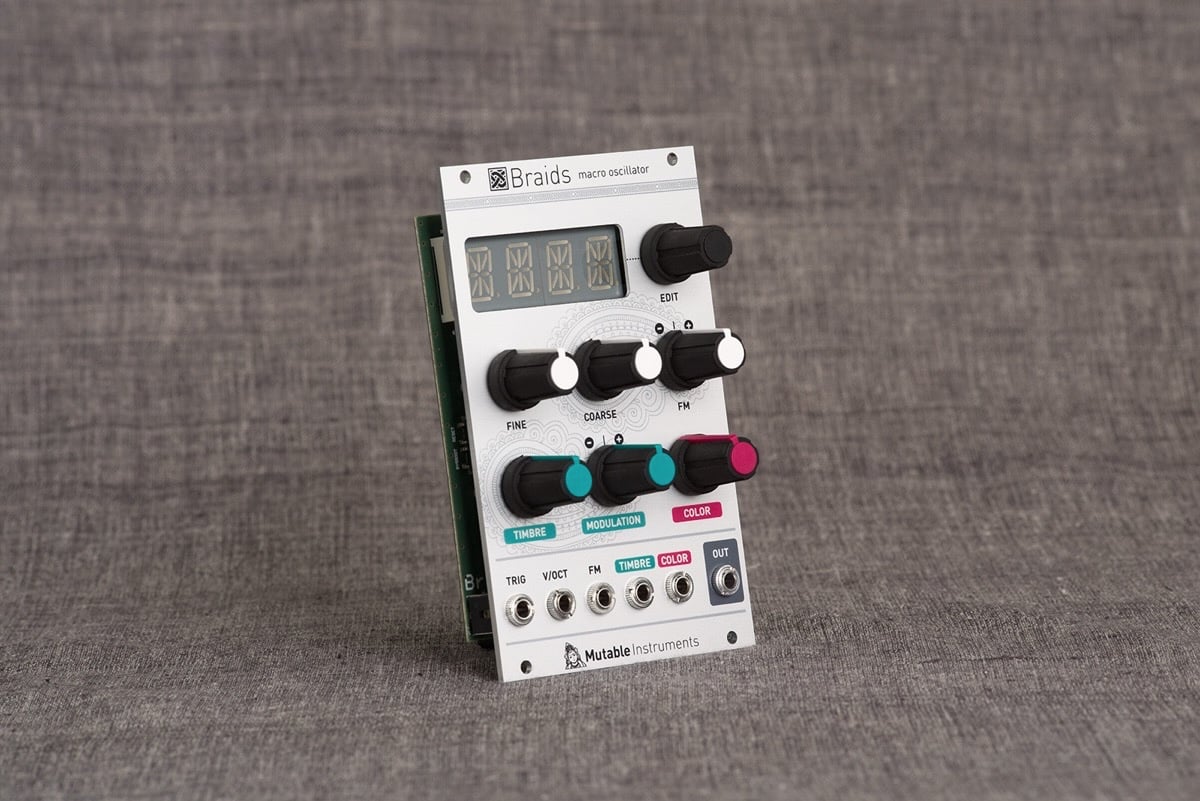
Complementing the embarrassment of sonic riches under the hood, Braids distilled the essential elements for operating and manipulating an impressive arsenal of waveforms. Add in the fact that navigation with the encoder and LED screen kept the menus shallow and the tinkering at a minimum (hmmm, where have I seen this lately coughcoughPamelacoughcough) and Braids was destined for stardom.
Braids Controls/Interface
When describing how she sketches out a build, Gillet said “The main process is thinking in terms of ‘activities’ or ‘processes’ the musician would like to achieve, and then try to come up with parameters/dimensions the musician could control.” This tailored approach to specific controls that yield satisfying results is a mainstay not only of Mutable Instruments—but is now also one of the guideposts etched in stone for many modular builders of 2024.
Designed to keep the user engaged but not belabored, Braids engaged a streamlined interface that would come to typify Mutable Instruments. The LED screen and encoder took top billing, followed by knobs for Coarse and Fine tuning as well as the shape-shifting Color knob, and attenuverters for frequency modulation (FM) and Modulation, which controls the CV input for mode-specific Timbre.
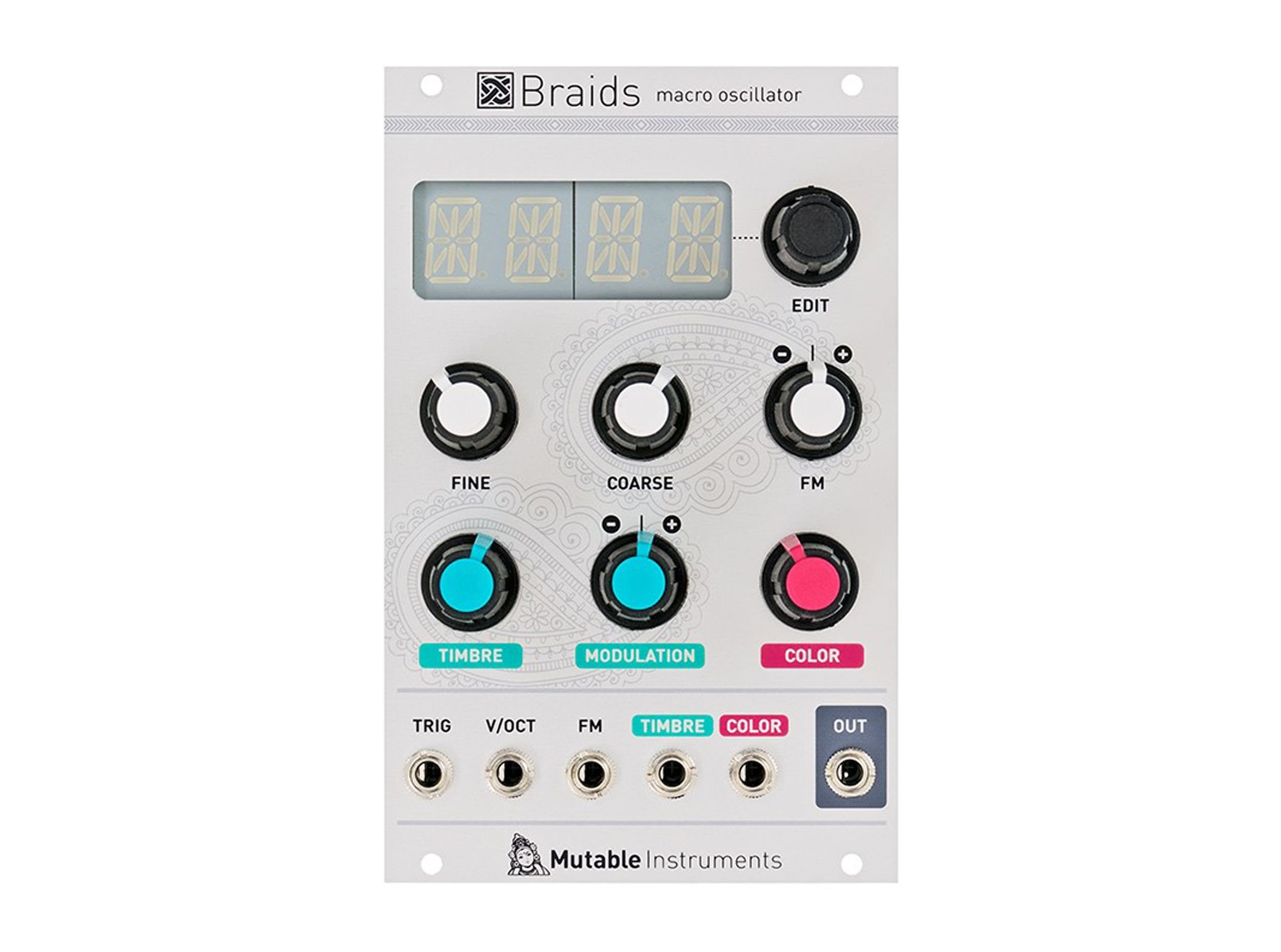
The bottom of the module featured an ordered row of five CV inputs and a single Output. On the inputs, you naturally got a Trig and a 1V/oct as well as CV control for the FM, Modulation, and Color parameters. Finally, a quick trip into the Options of Braids reveals controls for Bit Depth and Sample Rate, an onboard Quantizer, simulated oscillator Detune and Drift, and built-in Envelopes which can be applied to Frequency, Color, and Timbre as well as the amplitude—effectively turning Braids into an entire synthesizer in a single module. This on-the-fly system is particularly useful in the Braids environment where flipping through modes with immediately tangible and appreciable parameter controls make for immense fun. Brian Eno once said that he wanted a synthesizer with a single knob with every position on that knob yielding interesting results; it’s not quite one knob, but Braids remains a hallmark of big functionality in a small footprint.
Braids Synth Modes: Direct Digital Synthesis
Here’s where the flexibility of Braids really starts to shine. Familiar faces from Shruthi and Ambika are on deck, such as two-operator FM synthesis—but there’s a lot more to play with here. For instance, you get two additional FM modes utilizing feedback and wavetables for more experimental, unstable offerings, and that’s just a start.
Likewise, Braids boasted other past favorites like the CZ-inspired phase distortion filtered waveforms, souped up with three additional modes of operation, and a new hi-fi mode for the formant vowel synthesis. Plenty of new ear-raising possibilities were along for the ride as well, like a circuit-bent sawtooth generator with sample rate reduction and bit toggling, a trio of ring-modulated sine waves, and a huge comb-filtered sawtooth wave.
Braids Synth Modes: Physical Modeling
Speaking of ringing, the blueprint for the physical-modeling powerhouse Rings came into view with the release of Braids. In a system familiar to those who have owned Rings, some modes of Braids’s physical modeling required an exciter signal which activated the digital resonator. So not only did this behemoth give birth to the “Macro Oscillator” concept; it provided the groundwork for another revolution in modular recreating bells, drums, and everything in between.
The plucked sounds of Karplus Strong were available for a variety of string sounds, achievable via the aforementioned exciter signal into Braids. Alternate techniques like the use of sine wave partials and additive synthesis were also employed to achieve bowed strings, reeds, and flutes, inharmonic bells, metallic drums, and even an 808-style kick.
Braids Synth Modes: Wavetables
As previously mentioned, you got 21 wavetables on Braids as opposed to the eight available on previous MI synths, but that wasn’t the whole wavy package. Braids also gave you four distinct modes for scanning, roving, and mangling your waveforms: naturally, you could start with the straightforward “WTBL” mode with controls to select a wavetable and scan through it. The “WMAP” mode arranged 256 waveforms in an XY grid for two-dimensional scanning, “WLIN” made all the wavetables one big wavetable to scan through, and “WTx4” was essentially a four-voice mode of the “WMAP”.
Braids Synth Modes: Noise Sources
Lastly, there were a number of noise sources including clocked digital noise, noise filtered by a bandpass or multimode filter, and the alluring sinusoidal grain and particle synthesis modes. These last two are of particular note and probably familiar to those who have played around with granular processors like the fan-favorite Mutable Instruments Clouds, another heavyweight with lineage tied directly to Braids.
The Legacy of Braids
Thanks to the open-source ethos of Gillet and Mutable Instruments, Braids mutated, evolved, and persisted to this day, with clones still readily available. Enterprising coders also created alternate firmwares like “Bees in the Trees” or “Renaissance” that did everything from expanding internal modulation parameters for a broader sonic palette to adding a robotic text-to-speech generator from an ancient video game system.
Perhaps most importantly, Braids also paved the way for one of the most consequential creations in all of modular-dom: Plaits. Out of “official production” since 2022 but still the number one most popular module on ModularGrid, Plaits perfected the Macro Oscillator concept and the streamlined, screenless design that made for immense playability.
In short, Eurorack probably wouldn’t be where it is today without the Macro Oscillator concept. It’s been over a decade since Braids was introduced to the world, but thanks to the sheer amount of functionality and fun designed into the module, it still earns and deserves a spot in anyone’s rig who wants a lot of synth in a little package.

